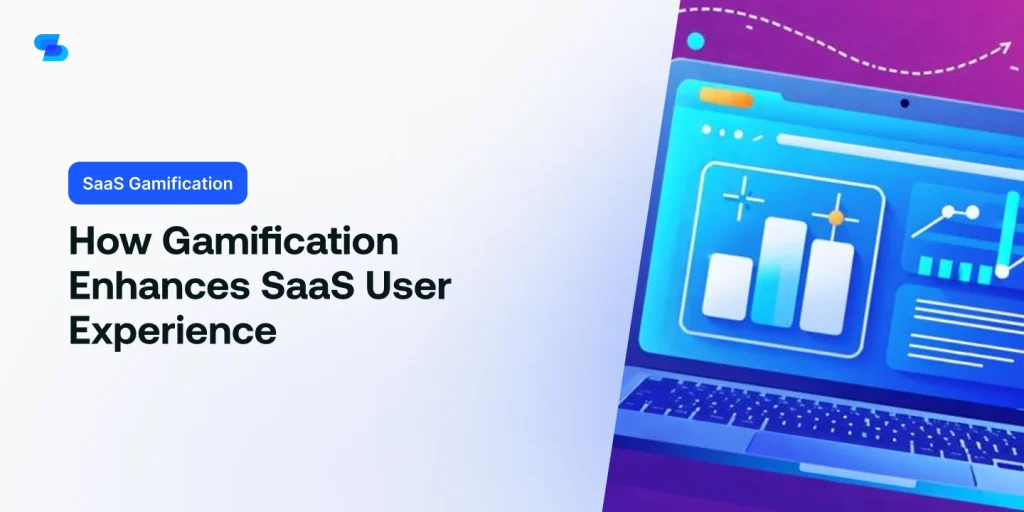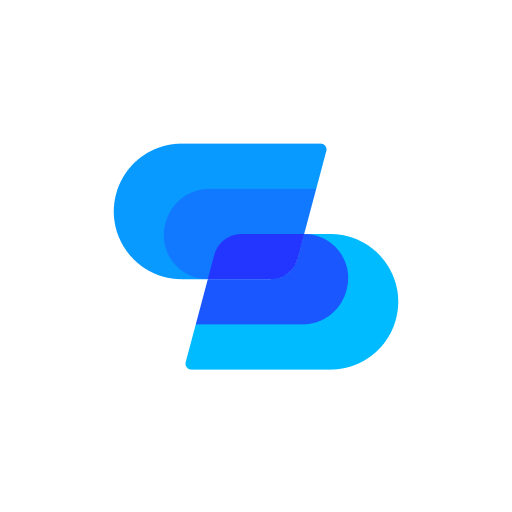You’ve likely encountered gamification in your daily life without realizing it. In the SaaS world, this powerful tool transforms mundane tasks into engaging experiences. By incorporating game-like elements such as points, badges, and leaderboards, SaaS platforms can greatly boost user engagement and motivation. Data shows that gamified applications see up to 250% higher user retention rates compared to their non-gamified counterparts. But how exactly does gamification work its magic on SaaS user experience? The answer lies in understanding the psychology behind user behavior and implementing strategic gamification techniques that align with your business goals.
Understanding Gamification in SaaS
Three key elements define gamification in SaaS: points, badges, and leaderboards, which work together to boost user engagement and drive desired behaviors.
Points serve as a virtual currency, rewarding users for completing tasks or achieving milestones within the software. Badges act as visual representations of accomplishments, providing a sense of pride and progress. Leaderboards foster healthy competition by displaying top performers, encouraging users to aim for improvement.
To implement gamification effectively in your SaaS product, you’ll need to identify specific user actions that align with your business goals. These actions could include completing onboarding steps, utilizing key features, or contributing to community forums. By assigning point values to these actions, you create a clear incentive structure for users.
It’s essential to design your gamification system with scalability in mind. As users progress, the challenges should become more complex, maintaining engagement over time. Additionally, consider incorporating social elements, such as team challenges or the ability to share achievements, to leverage the power of community.
Key Elements of Effective Gamification
To create an effective gamification strategy for your SaaS product, you’ll need to incorporate several key elements that drive user engagement and motivation.
Start by setting clear goals and objectives for your gamification efforts. These should align with your overall business objectives and user needs.
Next, implement a points system that rewards users for desired actions. This can include completing tasks, achieving milestones, or consistently using your product. Pair this with levels or tiers that users can progress through, providing a sense of advancement and accomplishment.
Incorporate challenges and quests to keep users engaged and motivated. These should be achievable but challenging enough to maintain interest. Use leaderboards to foster healthy competition among users, but make sure they’re segmented to avoid discouraging newcomers.
Don’t forget about rewards and recognition. Offer both intrinsic rewards (like badges or titles) and extrinsic rewards (such as discounts or exclusive features) to cater to different user motivations. Implement a feedback loop that provides immediate and positive reinforcement for user actions.
Lastly, make certain your gamification elements are seamlessly integrated into your SaaS interface, enhancing rather than disrupting the user experience.
User Motivation and Behavioral Psychology
To effectively implement gamification in your SaaS product, you’ll need to understand the psychological drivers behind user behavior.
Consider the balance between intrinsic rewards, which tap into users’ internal motivations, and extrinsic rewards, which provide external incentives for actions.
Intrinsic Vs. Extrinsic Rewards
Understanding the distinction between intrinsic and extrinsic rewards is essential for effective gamification in SaaS user experience. Intrinsic rewards stem from the user’s internal motivation, such as the satisfaction of mastering a skill or achieving a personal goal. These rewards are deeply tied to the user’s sense of accomplishment and autonomy.
Extrinsic rewards, on the other hand, are external incentives like points, badges, or leaderboard rankings. When implementing gamification, you’ll want to strike a balance between these reward types. Research shows that while extrinsic rewards can boost short-term engagement, they may diminish intrinsic motivation over time.
To optimize your SaaS gamification strategy, focus on creating meaningful challenges that align with users’ intrinsic motivations. Incorporate progress tracking, skill development, and personal goal-setting features to tap into users’ internal drive.
Don’t neglect extrinsic rewards entirely, though. Use them strategically to reinforce desired behaviors and provide immediate feedback. Remember, the most effective gamification systems combine both reward types, creating a compelling user experience that drives long-term engagement and satisfaction with your SaaS product.
Operant Conditioning Principles
Operant conditioning principles form the backbone of effective gamification strategies in SaaS user experience, leveraging key behavioral psychology concepts to drive user motivation and engagement. These principles, developed by B.F. Skinner, focus on how behavior is influenced by consequences.
In SaaS gamification, you’ll find four main types of operant conditioning:
- Positive reinforcement: Reward users for desired actions, such as completing tasks or achieving goals.
- Negative reinforcement: Remove obstacles or unpleasant elements when users perform target behaviors.
- Positive punishment: Introduce penalties for undesired actions to discourage them.
To implement these principles effectively, you should:
- Use variable reward schedules to maintain user interest.
- Provide immediate feedback to reinforce behaviors.
- Gradually increase task difficulty to keep users challenged.
- Offer personalized rewards based on individual preferences.
Implementing Gamification: Best Practices
When you’re diving into gamification for your SaaS platform, it’s crucial to follow proven best practices that’ll maximize user engagement and drive desired behaviors.
Start by clearly defining your objectives and aligning gamification elements with your product’s core functionality. Implement a points system that rewards users for completing tasks and achieving milestones. Create leaderboards to foster healthy competition and social interaction among users.
Incorporate progress bars and levels to provide visual feedback on user advancement. Design challenges and quests that encourage exploration of your platform’s features. Use badges and achievements to recognize user accomplishments and expertise. Implement a meaningful reward system that offers tangible benefits or exclusive content.
Confirm your gamification elements are scalable and adaptable to accommodate user growth and changing needs. Regularly analyze user data to refine and optimize your gamification strategy. A/B test different elements to identify what resonates most with your audience.
Keep the user interface clean and intuitive, avoiding overwhelming users with too many game-like features. Finally, maintain a balance between gamification and core functionality to confirm your SaaS product remains focused on solving users’ primary needs.
Measuring Gamification Success
To gauge the impact of your gamification efforts, you’ll need to zero in on key metrics that align with your SaaS platform’s goals and user engagement objectives.
Start by tracking user retention rates, as gamification should boost long-term engagement. Monitor daily and monthly active users (DAU/MAU) to assess how frequently users interact with gamified elements.
Measure task completion rates to determine if gamification motivates users to finish critical actions within your SaaS. Track progress through levels or achievement systems, analyzing how quickly users advance and where they might get stuck. Pay attention to social sharing metrics if your gamification includes collaborative or competitive features.
Don’t overlook the impact on your bottom line. Measure conversion rates, average revenue per user (ARPU), and customer lifetime value (CLV) to quantify the financial benefits of gamification. Use A/B testing to compare gamified versus non-gamified user experiences, ensuring that your efforts truly drive improvements.
Collect qualitative data through user surveys and feedback to understand the emotional impact and perceived value of your gamification strategy.
Regularly analyze these metrics to refine your approach and maximize the effectiveness of gamification in enhancing your SaaS user experience.
Case Studies: Gamification Triumphs
You’ll find compelling evidence of gamification’s impact in SaaS through two notable case studies.
Duolingo’s language learning streak feature has greatly boosted user engagement, with learners motivated to maintain daily practice.
Salesforce’s Trailhead program, with its badge system, has revolutionized skill development, making complex software training more accessible and enjoyable for users.
Duolingo’s Language Learning Streak
Duolingo’s language learning streak feature consistently stands out as a prime example of successful gamification in SaaS, motivating users to maintain daily engagement with the platform.
By encouraging users to practice their chosen language daily, Duolingo taps into the psychological principle of loss aversion, making users reluctant to break their streak and lose progress.
The streak mechanic has proven highly effective, with Duolingo reporting that users with a 7-day streak are 23% more likely to continue using the app long-term. Additionally, those maintaining streaks of 30 days or more show a 53% increase in lesson completion rates compared to non-streak users.
To maximize the impact of this gamification element, Duolingo implements:
- Visual progress indicators
- Daily reminders
- Streak freeze items to protect streaks
Salesforce’s Trailhead Badges
While Duolingo excels in language learning gamification, Salesforce’s Trailhead program offers another compelling case study in how badges can drive user engagement and skill development in a B2B SaaS context. Trailhead uses a system of badges and points to motivate users to learn Salesforce’s complex CRM platform.
You’ll find that Trailhead’s gamification strategy is multilayered. It offers bite-sized learning modules, each culminating in a badge upon completion. These badges aren’t just digital stickers; they represent tangible skills that you can showcase on your professional profile. The program also includes ranks like ‘Ranger’ for completing numerous trails, adding a competitive edge.
Data shows Trailhead’s success: over 2 million users have earned more than 20 million badges since its 2014 launch. This engagement translates to real-world impact, with 53% of Trailblazers reporting career advancement due to their Salesforce skills.
To implement a similar strategy, focus on:
- Creating achievable, skill-based milestones
- Offering visible rewards (badges, ranks)
- Tying achievements to career advancement
Future Trends in SaaS Gamification
As SaaS platforms evolve, gamification techniques are set to become more sophisticated, leveraging AI and machine learning to create personalized, adaptive experiences for users.
You’ll see more SaaS companies implementing dynamic reward systems that adjust based on individual user behavior and preferences. These systems will offer tailored challenges and incentives, maximizing engagement and productivity.
Virtual and augmented reality will play a significant role in future SaaS gamification. You can expect immersive training modules and interactive tutorials that blend real-world applications with game-like elements. This approach will enhance user onboarding and skill development, making complex software more accessible and enjoyable to use.
Social gamification will also gain traction, with collaborative challenges and team-based competitions becoming more prevalent. You’ll see increased integration of social media features within SaaS platforms, fostering community engagement and peer recognition.
Data analytics will drive gamification strategies, allowing SaaS providers to fine-tune their approaches based on user performance metrics. You’ll benefit from more targeted, effective gamification elements that align closely with your specific goals and learning styles.
Prepare for a future where gamification seamlessly integrates with your SaaS experience, making software use more engaging, productive, and tailored to your needs.
To Wrap Up
You’ve seen how gamification can revolutionize your SaaS user experience. By implementing points, badges, and challenges, you’ll boost engagement and retention.
Remember to align gamification with your business goals and user needs. Track metrics like DAU and task completion rates to measure success.
As you move forward, stay updated on emerging trends like AR and AI in gamification. With these strategies, you’ll create a more engaging, satisfying experience for your SaaS users.

